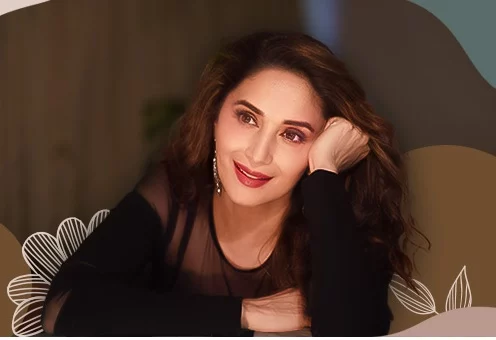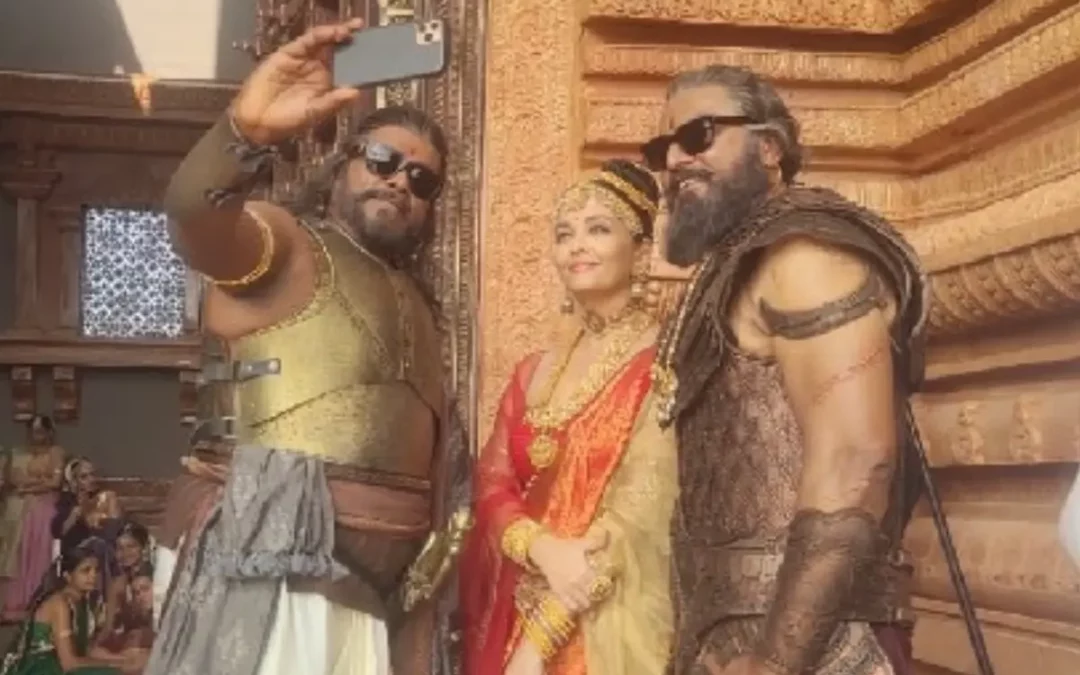Read in : தமிழ்
Ponniyin Selvan sticks to the script. It’s less a Mani Ratnam movie and more a faithful adaptation of Kalki’s novel.
Raja Raja Chozhan was a glorious emperor, about whom Kalki wrote a well-researched story Ponniyin Selvan in the early 1950s – serialized in the Kalki magazine for nearly four-and-half years. So riveting was the narrative that lakhs of readers back in the day had a sense of affinity with the characters that felt more like real-time people in flesh and blood. Even after the serialized story was published as a five-volume book in 1955 running to 2,210 pages, it proved an exhilarating and enriching page-turner. It was translated in several languages and has had several editions.
Have you read the novel?
The story’s pivot is Sundara Chozha, the bed-ridden emperor counting his days. At the same time, a secret drama full of palace intrigues unfolds underground to make his nephew Madhurantaka Chozha succeed him. The aged emperor’s two sons are Adita Karikalan and Arulmozhivarman (Ponniyin Selvan); the former is away in the north, busy conquering rival kingdoms and the latter on an invasion in Sri Lanka.
Against this background, the two Pazhuvettarayar brothers, who were the de-facto rulers, though nominally lieutenants, with the support of several chieftains, rally behind Madhurantaka Chozha.
 Sniffing out this conspiracy, Adita Karikalan sends his confidant Vallavarayan aka Vandhiyadevan on an espionage mission to Thanjavur, the nerve centre of Chozha kingdom. Vandhiyadevan meets Kundavai, Chozha princess, and Nandhini, wife of big Pazhuvettarayar. Consequently, he is sent by Kundavai to Sri Lanka to bring back her younger brother Arulmozhivarman. However, an order is issued by the Chozha kingdom to arrest the prince and get him imprisoned.
Sniffing out this conspiracy, Adita Karikalan sends his confidant Vallavarayan aka Vandhiyadevan on an espionage mission to Thanjavur, the nerve centre of Chozha kingdom. Vandhiyadevan meets Kundavai, Chozha princess, and Nandhini, wife of big Pazhuvettarayar. Consequently, he is sent by Kundavai to Sri Lanka to bring back her younger brother Arulmozhivarman. However, an order is issued by the Chozha kingdom to arrest the prince and get him imprisoned.
The serialized story was published as a five-volume book in 1955 running to 2,210 pages, it proved an exhilarating and enriching page-turner. It was translated in several languages and has had several editions
Meanwhile, Nandhini, who colludes with spies from the Pandya Kingdom, sends her own henchmen to finish off Arulmozhivarman.
What happens thereafter? Does Arulmozi return to Thanjavur? Is the political conspiracy to capture the throne scuttled?
Also Read: Ponniyin Selvan movie: The strong story that Mani Ratnam films lacked
All these questions are answered by Ponniyin Selvan Part-1. The screenplay has been crafted by the team of Jeyamohan, Kumaravel and Mani Ratnam in such a way that it feels more like a history lesson taught in classroom so the film buffs who have not read the original novel don’t feel hamstrung.

T P Gajendran: How would he have been as Azhvarkadiyan
Is the film interesting?
The film may not spring a surprise on those who have already read the original novel through and through. But the actors selected to give flesh and blood to certain characters the readers may have already cultivated images of may be a surprise. For instance, the quixotic character of Azhvarkadiyan, which is played out by Jayaram, tumbled out of the pages as a look-alike of T. P. Gajendran, director and actor, back in the 1980s. Madhuri Dixit seemed to be a good choice for Nandhini then.
Book lovers and film buffs have different actors in their minds while reading the book and visualizing its film version. This kind of visualization has differed from time to time. Now images of MGR dressed in medieval costume as Vandhiyadevan is doing the rounds in social media).
Probably, readers may feel a bit disappointed when they do not see on the screen their favourite actors and actresses they have imagined all along.
But fortunately enough, the artistes essaying the roles ranging from Vandhiyadevan to Adita Karikalan, Arulmozhivarman and Kundavai (Trisha plays the role performed by S. Varalaxami in the old Raja Raja Chozhan) have not received any negative feedback so far.
The back-to-back characters paraded with a flourish, events lined up seamlessly and dialogue providing information and historical detail, not emotion, keeps the audience occupied. The director has deliberately avoided giving certain vital info in the first half so as to make the turns and twists quite interesting in the second half.
As for dialogue, Tamil in its pristine purity is used for effect. Luckily, no dialect is used and classical Tamil is used throughout.

Madhuri Dixit as Nandini?
The costume designer’s selection for the royal as well as common personages is quite fitting. Thanks to Thotta Tharani’s art, palace interiors, boats, ships, cave temples, Buddha vihars, forts, ramparts, underground tunnels, markets and festival venues have appropriately been reconstructed in sync with the Chozha ambience.
Cameraman Ravi Varman’s gadget captures captivating scenes of massive crowds. For instance, the scene showing Vandhiyadevan making a great escape from the palace of Big Pazhuvettarayar across the walls shows him at his best.
Sreekar Prasad has done a wonderful job, editing a film teeming with over two dozen characters, behind-the-scenes characters and seamless strings of episodes. A strong coherence runs through the narrative thanks to his editing.
Above all, A.R. Rahman’s score is riveting. The songs ‘tumtumtumtamarae’ and ‘ratchasa maamanae’ are interesting in terms of music, camera work and editing.
The scenes raising the traditional question over superiority of Saivism or Vaishavism and showing a Tamil king getting blessings from a Buddhist monk in a vihar are not controversy material because they are in the novel
The first half of the film has five songs and the second half only one song ‘alaikadal’ that barely takes a minute. That is the reason the background music in the first half seems not prominent. This drawback is made up for in the second half where it is the powerfully gripping background music that evokes a medley of emotions such as suspense and sadness.
Also Read: Why Ponniyin Selvan won’t redeem Jeyamohan’s reputation in films
Whither Mani Ratnam?
Mani Ratnam ventures such as Mouna Ragam, Nayakan in the 1980s and Iruvar, Alaipaayuthae in the late 1990s presented worlds the viewer had not before been exposed to. The camera work, the brimming hues, the lighting and the Mani Ratnam brand of crisp and enigmatic dialogue delivery in those films had a foreign feel. No wonder, the films were celebrated as iconic despite the controversies, political, cultural and social.
But Ponniyin Selvan Part-1 is a far cry from the past films
The scenes raising the traditional question over superiority of Saivism or Vaishavism and showing a Tamil king getting blessings from a Buddhist monk in a vihar are not controversy material because they are in the novel. Mani Ratnam’s PS-1 is a surprise insofar as it remains a celluloid version of a story well-known to many.
Probably, he had wanted to swim with the current, replicating the success of Bahubali, a mega historical fiction (on this count, a social media battle rages now between Telugu and Tamil film buffs). Unfortunately, as he had worked within the constraints of the commercial trend and demands, the characteristic Mani Ratnam is lost in the Chozha crowd.
He had probably expected the parade of powerful and pleasantly well-known faces on the screen to be the driving factor for what’s termed in film parlance – the repeat audience. His ploy seems to have paid off, going by the good reception ordinary viewers have given to the film at the theatres. So, the message is loud and clear. Mani Ratnam has come up with a ‘minimum guarantee’ film.
All said and done, as far as Mani Ratnam fans are concerned, PS-1 has, except the grand picturization. nothing to crow about.
Read in : தமிழ்











